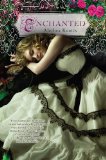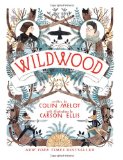Summary | Excerpt | Reviews | Beyond the book | Read-Alikes | Genres & Themes | Author Bio

Rooftoppers, by Katherine Rundell, set in the 19th century, begins after the sinking of a transatlantic ocean liner. A baby girl is found floating alone in a cello case. A man pulls her from the water. He is Charles Maxim, an eccentric scholar, who adopts the girl and names her Sophie. Precocious Sophie grows up in London as Charles's ward. She enters her adolescence polite, good-hearted, bookish and as eccentric as Charles. She spends her time reading books, climbing trees, and wearing outlandish clothing. Sophie and Charles seem perfectly united, but they diverge on one big issue: Sophie's mother. Charles believes that she was a passenger on the ship who died during its sinking. Sophie, however, is determined that not only did her mother not die, but she was a cellist in the ship's orchestra. Sophie pines for her mother, and determines to find her one day, even in the face of Charles's (and the world's) insistence that she is not alive and thus, cannot be found.
The British National Childcare Agency takes an interest in Charles and Sophie's eccentric ways from the beginning. Fearing that Charles will not teach Sophie to grow up to be a lady, they inform the duo when Sophie turns twelve that she will be removed from Charles's care and placed in an orphanage. This prompts the pair to flee to Paris. They plan to find the cello-maker whose address they have recently found inside Sophie's cello case.
In Paris, Sophie, ever drawn to heights, pops through a skylight and meets Matteo, a rooftop dwelling orphan who helps her look for the source of mysterious cello music that floats over the city. But how long can they search before the authorities catch them?
Rooftoppers reads very much like two separate stories. The London section, while vital to the rest of the book, feels just a bit contrived. The plot point about the National Childcare Agency hot on Charles and Sophie's heels feels like an excuse to go to Paris, reducing Sophie's early childhood to a way station between being rescued and going to Paris. Contrived though it may be, it is still whimsical – Charles' enthusiastic encouragement of Sophie's tree-climbing habit is one example of the book's fanciful style, as is his aphorism to "never ignore a possible."
In contrast, the Parisian section is magical in the way that the best fairy tales are — combining elements of the fantastic and the grittily realistic into an irresistible alchemical brew. Katherine Rundell has created a fascinating world on the rooftops of Paris. The life of the eponymous "rooptoppers" is grimy; it involves hunger, injury and internecine warfare. Matteo's visceral discussion of the comparative worth of goose versus pigeon versus squirrel fat being combined with bandages for winter foot coverings springs to mind as a perfect example, as is the "war" between street urchins. Nevertheless, the Paris of Rundell's imagination is a magical place, full of amazement and mysteries, largely due to the clever and luminous prose brought to the book by the author.
Overall, the book is playfully optimistic and the characters vividly drawn. A charming and engaging read, Rooftoppers would be ideal for ages 9 and up, as well as fairy tale fans of all ages.
![]() This review was originally published in The BookBrowse Review in October 2013, and has been updated for the
June 2014 edition.
Click here to go to this issue.
This review was originally published in The BookBrowse Review in October 2013, and has been updated for the
June 2014 edition.
Click here to go to this issue.

If you liked Rooftoppers, try these:

by Alethea Kontis
Published 2013
It isn't easy being the rather overlooked and unhappy youngest sibling to sisters named for the other six days of the week. Sunday's only comfort is writing stories, although what she writes has a terrible tendency to come true...

by Colin Meloy, Carson Ellis
Published 2012
Wildwood is a spellbinding tale full of wonder, danger, and magic that juxtaposes the thrill of a secret world and modern city life.
Your guide toexceptional books
BookBrowse seeks out and recommends the best in contemporary fiction and nonfiction—books that not only engage and entertain but also deepen our understanding of ourselves and the world around us.